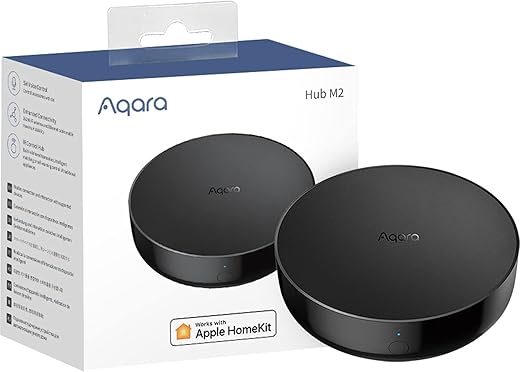









Understanding Automation Controllers: The Brain Behind Efficient Systems
In an age where efficiency is king, automation controllers have emerged as indispensable tools for businesses and homeowners alike. But what exactly is an automation controller, and why should you care? Let’s dive into the world of automation controllers, exploring their functions, benefits, and implementation strategies.
What is an Automation Controller?
At its core, an automation controller is a device that manages, regulates, and automates systems or processes. Imagine it as the brain that orchestrates various components of a machine or a home network, ensuring that everything operates smoothly and efficiently. Whether it’s controlling the temperature in your home, regulating production lines in a factory, or managing energy consumption in smart buildings, automation controllers play a pivotal role.
Think of them like traffic lights at a busy intersection; they ensure that everything flows seamlessly without chaos. Without these controllers, systems would be prone to errors, inefficiencies, and even catastrophic failures.
Types of Automation Controllers
There are several types of automation controllers, each tailored for specific applications. Here’s a breakdown:
1. Programmable Logic Controllers (PLCs)
PLCs are the workhorses of industrial automation. They are designed to handle complex processes in manufacturing and production environments. With rugged hardware and the ability to withstand harsh conditions, PLCs can execute thousands of instructions per second, ensuring precise control over machinery.
2. Distributed Control Systems (DCS)
DCS are used in large-scale processes such as power plants and oil refineries. Unlike PLCs, which are typically localized, DCS manage processes distributed over large areas. Think of them as a conductor leading a symphony, where each musician (or control point) plays a vital role in the overall performance.
3. Building Automation Controllers
These controllers focus on optimizing energy use and enhancing comfort in buildings. They manage HVAC (heating, ventilation, and air conditioning) systems, lighting, and security. Imagine walking into a room where the lights automatically adjust to your presence while the thermostat maintains your preferred temperature—that’s the magic of building automation controllers.
Benefits of Using Automation Controllers
Why should you consider integrating automation controllers into your systems? Here are some compelling reasons:
1. Increased Efficiency
Automation controllers streamline processes, reducing the need for manual intervention. By automating repetitive tasks, they free up human resources for more strategic initiatives. This efficiency translates into cost savings and improved productivity.
2. Enhanced Precision
With automation controllers, the margin for error diminishes. They execute tasks with pinpoint accuracy, which is critical in industries where precision is non-negotiable. Think of it as having a master chef who never misses a step in a complex recipe.
3. Real-Time Monitoring and Control
Many automation controllers come equipped with advanced monitoring capabilities, allowing users to track performance in real-time. This feature is akin to having a fitness tracker that helps you monitor your health metrics; you can make informed decisions based on up-to-date information.
4. Scalability
As your needs evolve, so can your automation system. Automation controllers are designed to be scalable, meaning you can easily add new functionalities or components without overhauling your entire setup. This flexibility ensures that your investment remains future-proof.
How to Implement Automation Controllers
Implementing an automation controller may seem daunting, but with a structured approach, it can be a smooth process. Here’s a step-by-step guide:
1. Define Your Goals
Before jumping in, identify what you want to achieve with automation. Are you looking to reduce energy costs, increase production speed, or improve safety? Clear goals will guide your selection process.
2. Choose the Right Controller
Select an automation controller that aligns with your specific needs. Consider factors such as the complexity of tasks, integration capabilities, and budget constraints.
3. Plan Your Integration
Create a detailed plan for how the controller will integrate with existing systems. This may involve collaborating with engineers or IT specialists to ensure seamless connectivity.
4. Test and Optimize
Once implemented, rigorously test the system to identify any issues. Optimization is key—make adjustments as necessary to enhance performance and reliability.
5. Train Your Team
Don’t overlook the human element. Ensure that your team is adequately trained to operate and maintain the automation controller. This training is crucial for maximizing the benefits of your investment.
Conclusion
Automation controllers are revolutionizing the way we manage systems and processes. From enhancing precision and efficiency to providing real-time monitoring, these devices are essential for modern operations. As you consider implementing an automation controller in your own environment, remember to define your goals, choose wisely, and prepare for an exciting journey into the realm of automation.
FAQs
1. What industries benefit the most from automation controllers?
Automation controllers are widely used in industries such as manufacturing, energy, healthcare, and building management. Their ability to streamline processes and improve efficiency makes them invaluable across various sectors.
2. Can I integrate automation controllers with existing systems?
Absolutely! Many modern automation controllers are designed to integrate seamlessly with existing systems, allowing you to enhance functionality without a complete overhaul.
3. What kind of maintenance do automation controllers require?
Regular maintenance is essential to ensure optimal performance. This may include software updates, hardware inspections, and performance evaluations. Keeping your automation controller in top shape will extend its lifespan and effectiveness.
